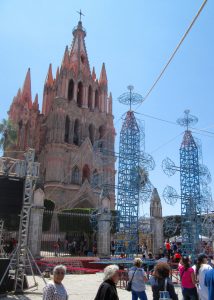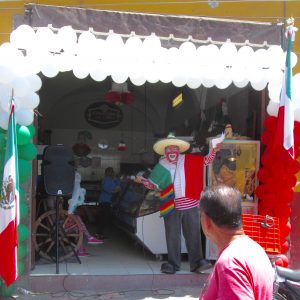In mid-September every year San Miguel de Allende, always a happy, colorful, beautiful, visitor-filled old colonial city, becomes exponentially more joyful when thousands of proud citizens throng the streets to celebrate Mexico’s Dia de la Independencia. This year marks 207 years of Mexico’s independence from Spanish rule, and the celebrations are spanning the whole country and the entire weekend.
San Miguel is especially proud to call itself “the first independent village of Mexico,” because this was the place that was peacefully handed over “with no bloody combats” to the insurgent army, led by Ignacio Allende, that, on September 16, 1810, entered the city. Another of the courageous freedom fighters was Miguel Hidalgo, a priest from the nearby community of Dolores, whose cry of independence included these famous words: “The time of our emancipation has come. This is the time for our freedom, and if you value freedom, you will help me to defend it from the Spanish rule….”
Yesterday, September 15, I walked around el centro, taking photos of the decorations and the preparations for the evening’s celebrations, which included the traditional Cry of Independence from the balcony of Casa de Allende (Allende’s house), followed by pyrotechnics and music.
This morning there was a civic and military parade through the streets, ending at the Plaza Principal. And this evening there will be a colorful, dramatic reenactment – complete with period costumes and lit torches – of the arrival of the insurgents into the occupied city, followed by folkloric dances and more fireworks. And tomorrow? More celebrations, more live music.
Here are just a few of my snapshots – consider them postcards – to give you a sense of being here in SMA and enjoying the festivities. At a time when the “United” States has never seemed more politically divided and the executive leadership has never been more unstable, I find Mexicans’ solid sense of patria and their expressions of pride in their deep-rooted history and heritage enviable.
Wish you were here!







